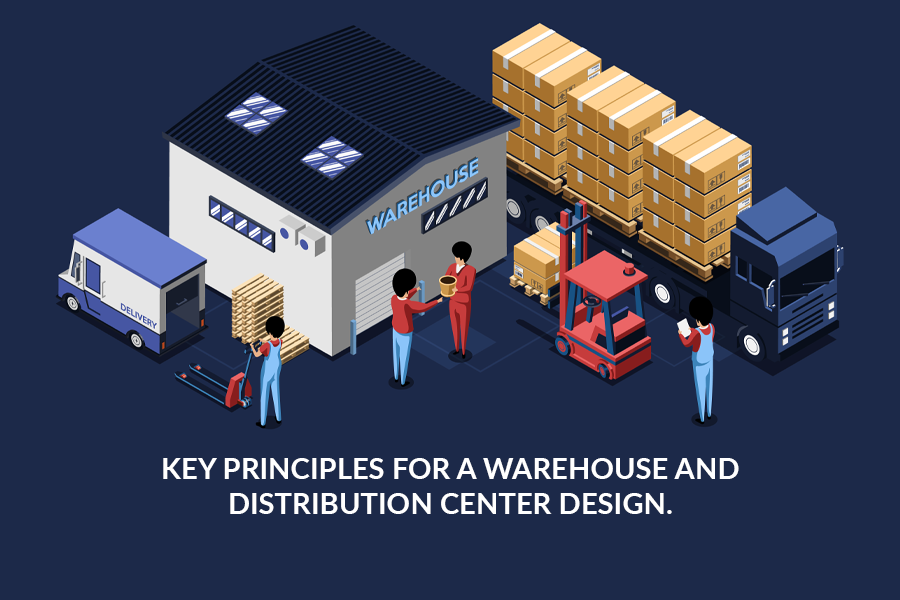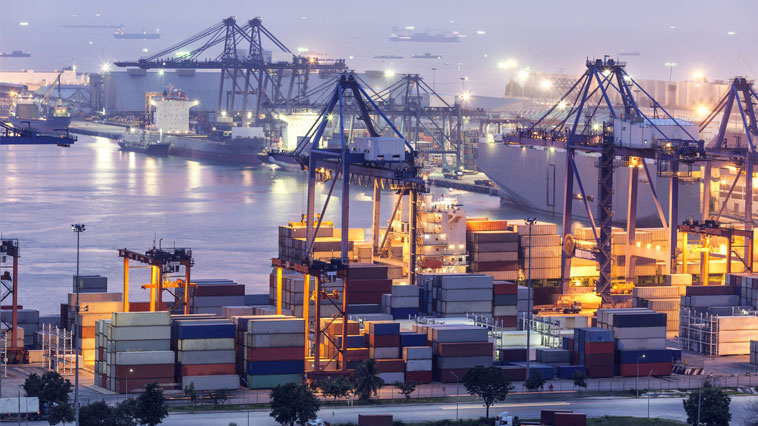
Key principles for a warehouse and distribution center design.
Warehousing is the most integral part of the supply chain and logistics industry and plays the most vital role in today’s business. The concept of warehousing has been there for many years ever since trade and commerce have been the driving factor. Storage was a great cause of concern for many business houses who wished to diversify and warehousing for the perfect storage solution that not only helped in achieving production levels but also products available in the market whenever there was a demand.
Today the warehouse ceases to be just a storage center and has evolved to become one of the key drivers for the E-Commerce industry. Hence Warehouse Management Services has become a very prominent service offered by many logistics companies. For a warehouse and distribution center to be fully functioning and effective in its operations it has to be designed keeping in mind many factors of operations that the distribution center has to cater to. Many times the need for a well-designed warehouse is misunderstood and overlooked that generally leads to a completely disorganised setup. This eventually leads to a chaotic distribution center thereby gravely affecting the supply chain operations.
Let’s take a look at some of the key important factors that are essential in planning an optimally performing warehousing and distribution center.
Have an assessment of the volumes to handle :
Warehousing and a DC are all about the storage of goods that have to be retained at the center for a stipulated period or even an extended time till the product is ready to be shipped into the market. Hence one of the foremost elements that need to be considered while designing a warehouse is the volume which the center will have to hold. Volumes will also determine the various functions that have to be included that largely depend on the type of goods. While designing a warehouse it is very important to understand all the functions that need to be included in the site footprint, for example, the gantry cranes, the cold storage rooms, forklift charging areas, loading docks areas to store hazardous material, and individual facilities for packaging.
Clearly understand the objectives of the warehouse:
As we have seen a lot of changes in the logistics industry, there are very few warehouses that remain as storage facilities. Hence rather than just being a warehouse storage unit there has to be a much larger objective in place when designing a warehouse or a distribution center. We don’t want to outsource certain elements of a warehousing unit just because of the various inadequacies it may have. It is hence essential to define the objectives and goals for the warehouse facility about the marketing it has to serve and the geographical locations it has to cater to. What types of goods it will have to handle and what is the anticipated life of the warehouse facility or is it going to be a permanent infrastructure facility.
Material Handling:
Warehousing involves a lot of handling of products that are stored and a rule of thumb would be to keep manual handling to the minimum as possible. While designing a warehouse the infrastructure and operational flow should be in such a way as to facilitate the least manual touch points as possible. A warehouse flow is always from the inside out and hence the materials handling cannot be a primitive method.
Keep in mind the storage modes and other IT systems:
After finishing the assessment on all important aspects of the warehouse it’s also imperative that you should know about the various storage modes and IT systems that will be installed on the site and which is required. Technological advancements have facilitated more IT-enabled products to be installed for the picking, lifting, and racking of products, and hence all of these should be able to smoothly function on the premises. The warehouse design should accommodate all of these to assure a smooth operational flow.
Final Thoughts:
Warehouse designing involves a lot of caution as one small mistake can prove to be costly and damaging in the long run. It is always preferable to consult with an external entity that has expertise in designing such spaces as they will have all the resources to implement a design that best suits your supply chain mechanism.

